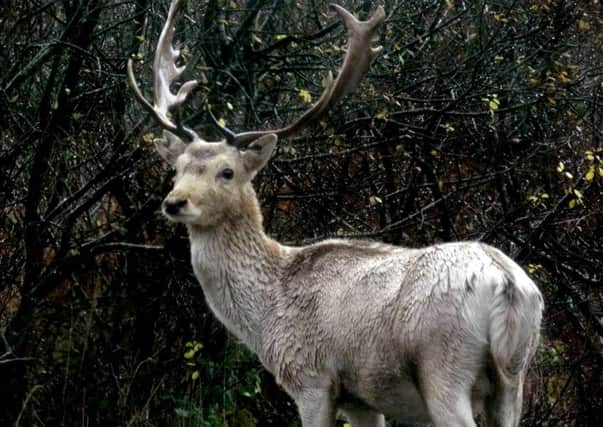The legend of the white stag of Edinburgh


Depictions of the creature can still be seen dotted around the city. They mark the incident said to have taken place on Holy Cross Day, September 14 1128, in the ancient forest of Drumsheugh which then covered vast swathes of land around Salisbury Crags.
King David I broke with convention when he embarked on a hunt in the woods on that day despite being strongly advised that the date was for worship and not for the chase.
Advertisement
Hide AdAdvertisement
Hide AdIt was a decision to lead to a new symbol for a city burgh - and spur the creation of what was to become one of Edinburgh’s finest landmarks.
As the King and his nobles advanced through the forest, a glimpse of a beautiful white stag, sometimes called a white hart, was caught by the group.
The King broke away and pursued the beast - before coming face to face with it in a clearing.
It is said that the rare animal, standing viciously at bay, then stepped forward to gorge the King as he lay in fear for his life.
At that moment, a divine intervention reputedly saved the King from attack.
Several versions of the legend exist. When the King went to grab the stag’s antlers, they miraculously turned into a large cross, according to some, with the deer fleeing as a result.
Other accounts claim that a silver cloud appeared at the moment the stag appeared, with a hand passing a silver cross to the monarch.
Advertisement
Hide AdAdvertisement
Hide AdSt Andrew, the apostle of Scotland, appeared to the King in a dream that night instructing him to show gratitude for his deliverance by founding an abbey.
While the truth of the legend is not clear, it is known that in 1128 a monastery was established which was to become Holyrood Abbey.
The walk between the Abbey and the walled town of Edinburgh became known as “Canons’ Gait” or Canongate.
King David later granted a charter to the burgh of Canongate and its arms included a stag’s head surmounted by a cross.
Although the burgh was abolished in 1856, the emblem can still be seen.
A gilded stag’s head with a cross between its antlers sits on the top of Canongate Kirk, as well as on the Mercat Cross on the Royal Mile.
The stag horns are also used on the badge of Broughton High School.
Advertisement
Hide AdAdvertisement
Hide AdThe white stag held mythical status for the Celts, who considered the animal to be a messenger from the otherworld.
Their appearance is said to bring change to the lives of those who encounter them.
In Arthurian legend, the white stag is an animal that can never be caught and represents the quest for spiritual knowledge.
A white stage was spotted on the west coast of the Highlands in 2008 with exact location of the beast kept secret to protect it from hunters. Another was spotted in Argyll in 2012.
